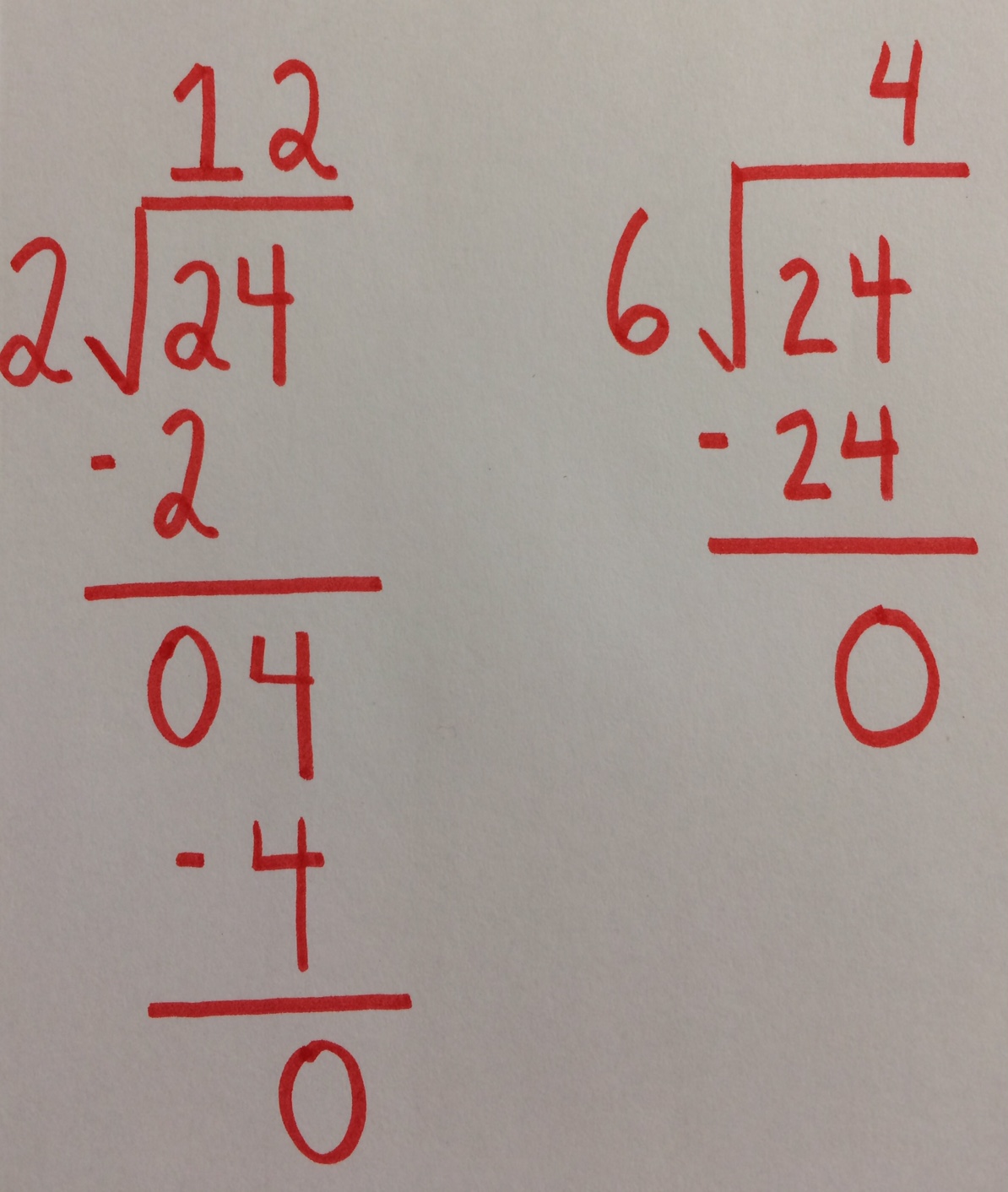Division is an inverse operation to multiplication and it works to form groups or distribute them evenly. This post will show how to operate both exact and inexact division.
When we are doing division, we can be given two situations: to form equal groups and be left with zero remainder (exact division), or to form groups with leftover elements (inexact division).
Let’s imagine that in a gym class, there are 24 students and the teacher has to decide which sport to play.
The class could play…
Soccer Basketball Tennis
with 11 players per team with 5 players per team in pairs of 2

Handball Baseball Volleyball
with 7 players per team with 9 players per team with 6 players per team

So that no student is left without a team, the teacher must decide between playing tennis in pairs or volleyball. Those are the only two options that would form equal groups with no students left over.
They are EXACT divisions.

While if the teacher decides to play football, basketball, volleyball or handball there would be children left out.
The examples with children left out are INEXACT divisions.

Therefore:
- A divison is exact when the remainder is zero. The dividend equals the divisor multiplied by the quotient.
- A division is inexact when there is a leftover remainder. The dividend equals the divisor multiplied by the quotient plus the remainder.
Register and try Smartick for free!
Learn More:
- Practice Dividing with and without Remainders
- What Is a Division? Basic Concepts
- The Relation between Multiplication and Division
- Division Exercises: Learning the Concept of Division
- Learn to Divide by One Digit with an Example








I like this app